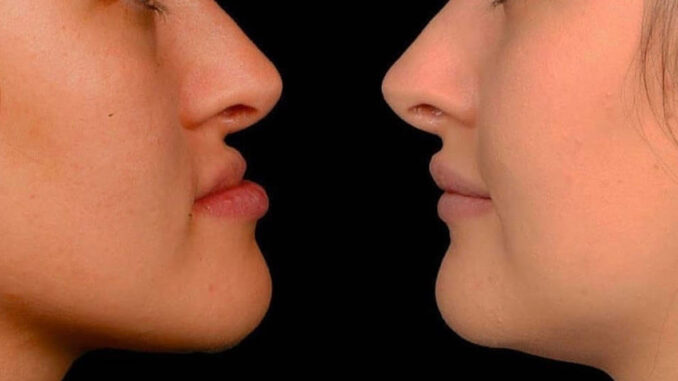
An underbite is a condition that will create a bulldog-like appearance in the face and mouth. An underbite is also called prognathism or Class III malocclusion. This condition is due to the lower jaw being longer than the upper jaw. Some cases can be very severe and can cause the teeth to extend forward. On the other hand, other cases are mild and barely noticeable.
Unfortunately, underbites are considered more than just a cosmetic issue. While some cases will respond well to orthodontic treatment, others will require underbite surgery. When not treated accordingly with underbite surgery and orthodontics, malocclusion might cause complications including:
- Face and mouth pain secondary to jaw misalignment
- Difficulty chewing and biting food
- Speaking challenges
Causes of Underbite
The way teeth are aligned can be affected by various factors. Typically, teeth grow in a way where the upper teeth fit a little over the lower teeth. The wide and flat teeth located at the back of the mouth (more commonly known as the molars) should fit into one another. Proper alignment of the tooth can help ensure you don’t bite your tongue or lips when eating. Underbite can be caused by any of the following:
Tumors
Tumors on the mouth or the jawbones can cause the bones in the jaw to protrude, resulting in an underbite
Injury
Some facial injuries can cause permanent damage to the jawbones. While broken jawbones can be repaired, in some cases, they would no longer fit together accordingly after the surgical realignment. This can also result in an underbite.
Genetics
In many cases, an underbite can be caused by genetics. This means if someone in your family has an underbite, you are also likely to develop one. Genetics is also a huge factor that can affect an individual’s tooth and jaw size and shape.
An underbite can also develop when the teeth are abnormally shaped, very close together, or impacted. Certain defects like cleft palate or lip can also appear at birth. These conditions have been known to contribute to malocclusion.
Childhood Habits
Some childhood habits can increase one’s risk for developing dental misalignments like an underbite. Some of the contributing factors can include:
- Long-term bottle feeding (beyond the infant years)
- Thumb sucking
- Use of pacifier in children over 3 years old
- Pushing on the teeth using the tongue
Treatment Options for Underbites
Many people don’t have teeth that are perfectly aligned. In most cases, minor teeth misalignments won’t require any medical intervention. Some of the possible treatment options for underbites include:
At-Home Treatment
Flossing and brushing the teeth regularly alongside regular dental visits are considered an integral part of proper oral care. However, those with underbites need to go beyond the routine oral care to ensure further decay and damage are avoided.
Part of your special oral routine can include biting with the lower incisors on a wooden spatula placed against the palate. This method may help mitigate the discrepancy between the upper and lower jaws in a growing child.
Non-surgical Treatment
Non-surgical treatment can help significantly to improve the appearance of underbites. In minor cases, plastic or wire braces may be recommended to help the teeth move into their proper places.
Removing one (or more) teeth found on the lower jaw may also help improve the appearance of an underbite. In severe cases, surgery might be recommended to correct the problem.
Underbite Surgery
Oral and Maxillofacial Surgeons can correct underbites through surgery. Some underbite surgeries will involve shortening the lower jaw or lengthening the upper jaw. In some instances, plates, screws, and wires may be used to maintain the jaw’s proper shape.
